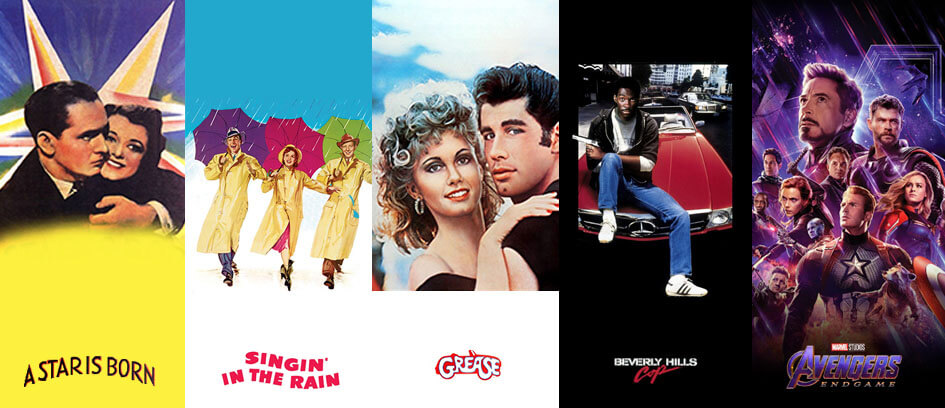
Introduction
Movie posters have long been a significant element of the film industry, offering a unique glimpse into the cinematic experience that awaits audiences. From the early days of cinema to the digital age, movie posters have evolved dramatically, reflecting changes in artistic styles, marketing strategies, and technological advancements. This article delves into the fascinating history and transformation of movie posters, highlighting key milestones and trends that have shaped their development.
Early Beginnings: The Birth of Movie Posters
The inception of movie posters dates back to the late 19th and early 20th centuries. In this era, posters were primarily used to promote live performances, such as theater productions and vaudeville shows. With the advent of cinema, these promotional tools quickly adapted to a new medium.
Silent Film Era: Simplicity and Bold Designs
During the silent film era (1890s-1920s), movie posters were characterized by their bold and simplistic designs. These posters often featured hand-drawn illustrations, dramatic fonts, and vivid colors to capture the audience’s attention. Notable examples include the posters for Charlie Chaplin’s films, which emphasized his iconic image and comedic persona. This period also saw the emergence of the one-sheet format, a standard size that became the industry norm.
Golden Age of Hollywood: Glamour and Star Power
The 1930s to the 1950s, known as the Golden Age of Hollywood, marked a significant evolution in movie posters. This era was defined by the rise of major film studios and the concept of star power. Movie posters began to prominently feature photographic portraits of stars, showcasing their allure and charisma. The posters for films like “Gone with the Wind” and “Casablanca” exemplify this trend, with their lavish designs and focus on leading actors.
Post-War Era: Innovation and Artistic Expression
The post-war era (1940s-1960s) witnessed a shift towards more innovative and artistic movie posters. This period saw the influence of various art movements, including surrealism and modernism, which brought a new level of creativity to poster design. Artists like Saul Bass revolutionized the field with their minimalist and abstract styles. Bass’s posters for films like “Vertigo” and “The Man with the Golden Arm” are iconic examples of this artistic approach.
1970s and 1980s: Blockbusters and Pop Culture Icons
The 1970s and 1980s heralded the era of the blockbuster, with films like “Jaws,” “Star Wars,” and “E.T.” dominating the box office. Movie posters from this period became synonymous with pop culture, featuring dynamic compositions, elaborate artwork, and memorable taglines. The “Star Wars” posters, designed by artists like Tom Jung and Drew Struzan, are prime examples of the era’s emphasis on epic storytelling and imaginative visuals.
1990s: Digital Revolution and New Aesthetics
The 1990s introduced the digital revolution to movie poster design. Advances in computer technology allowed for greater experimentation and precision in creating posters. This decade also saw a trend towards simplified and minimalist designs, as seen in the posters for films like “Pulp Fiction” and “The Matrix.” These posters often relied on striking imagery and bold typography to convey the film’s essence.
21st Century: The Age of Social Media and Viral Marketing
In the 21st century, the role of movie posters has expanded beyond traditional print media. With the rise of the internet and social media, digital posters and viral marketing campaigns have become crucial components of film promotion. Movie posters are now designed to be shared and viewed on various digital platforms, from websites to social media feeds.
Additionally, the 21st century has seen a resurgence of retro and nostalgic designs, as filmmakers and marketers tap into audiences’ fondness for past eras. Posters for films like “Stranger Things” and “La La Land” draw heavily on vintage aesthetics, blending contemporary design techniques with classic elements.
The Role of Movie Posters in Modern Film Marketing
Today, movie posters continue to play a vital role in the marketing strategies of film studios. They serve as the first point of contact between a film and its potential audience, conveying crucial information about the movie’s genre, tone, and stars. Effective movie posters must strike a balance between artistic expression and commercial appeal, capturing the essence of the film while enticing viewers.
Collectibility and Cultural Impact
Movie posters have also become highly collectible items, valued for their artistic merit and cultural significance. Vintage posters, particularly those from the Golden Age of Hollywood and the blockbuster era, can fetch high prices at auctions and are prized by collectors. This collectibility underscores the enduring appeal of movie posters as both art and memorabilia.
The evolution of movie posters is a testament to the ever-changing landscape of the film industry and the power of visual storytelling. From the simplistic designs of the silent film era to the digital masterpieces of today, movie posters have continually adapted to new trends and technologies while maintaining their core purpose: to captivate and entice audiences. As we look to the future, it is clear that movie posters will remain an integral part of the cinematic experience, evolving alongside the films they promote.
- Starburst Slot in 2025: Why This Classic Game Still Shines Bright - January 29, 2025
- Exploring the Antifungal Properties of CBD Oil for Candida Treatment - October 2, 2024
- Poker Bankroll Management: Staying in the Game - September 12, 2024